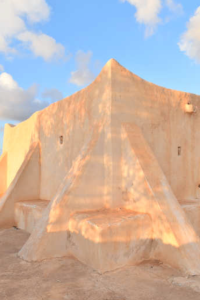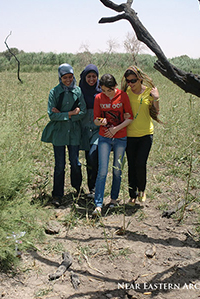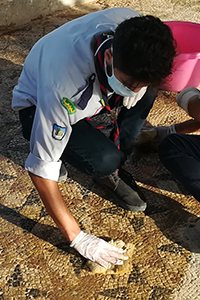
Not a Friend of ASOR yet? Sign up here to receive ANE Today in your inbox weekly!

August 2023
Vol. 11, No. 8
Local Communities and Archaeological Sites: A Case Study at Dougga in Tunisia
By John Whitehouse and Sami Harize
The site of Dougga (ancient Thugga), located approximately 110 km southwest of Tunis, has been occupied since the 6th century BCE by Numidian, Punic, Roman, Byzantine, and Arab-Muslim populations. Today, it is known for its spectacular Roman-era remains, including a theatre, temples, and baths. But at the end of the 19th century, the site was occupied by about 60 dwellings, housing some 300 people, which early French archaeologists sought to remove from the site. This was fully accomplished in the 1960s when the independent Tunisian state decided to permanently relocate the remaining inhabitants to a new nearby drab purpose-built village of Dougga Jadida. This process was not consensual but involved the use of official power, threats of violence, and a lack of agreement.
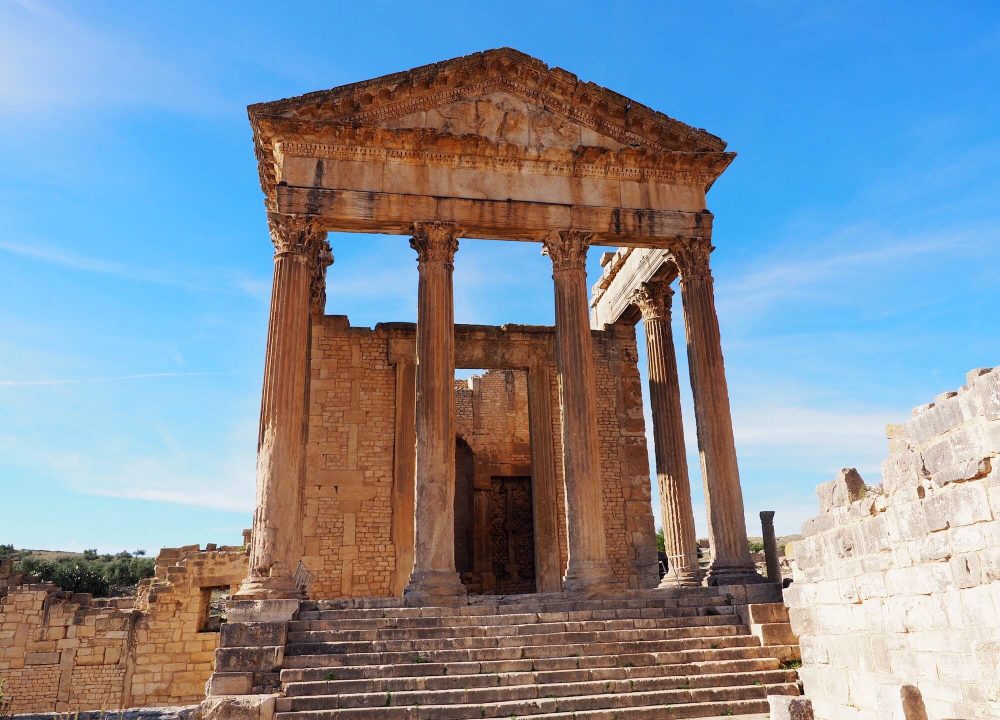
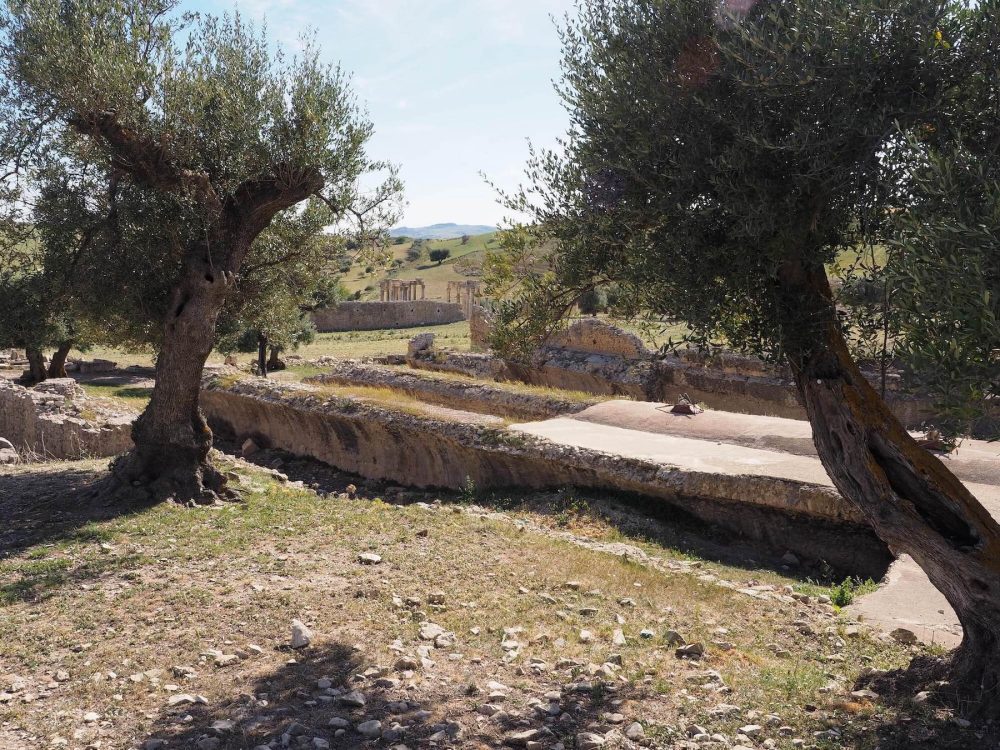
In antiquity, Dougga was supplied with water through an aqueduct (constructed in the 2nd century CE) which ends in a set of cisterns now called the Aïn El-Hammam cisterns. At the location where the aqueduct channel (specus) joined the cisterns, there is an area with white-washed walls, henna decoration, and handprints, and inside the narrow specus there is a vertical chamber lined with niches for candles with white-washed walls. This is the marabout or shrine of Oum Khoula, a local female Muslim saint. The veneration of Oum Khoula and the connection of this cult to the archaeological landscape highlights the need for researchers to give more attention to the cultural memory of local communities associated with archaeological sites.
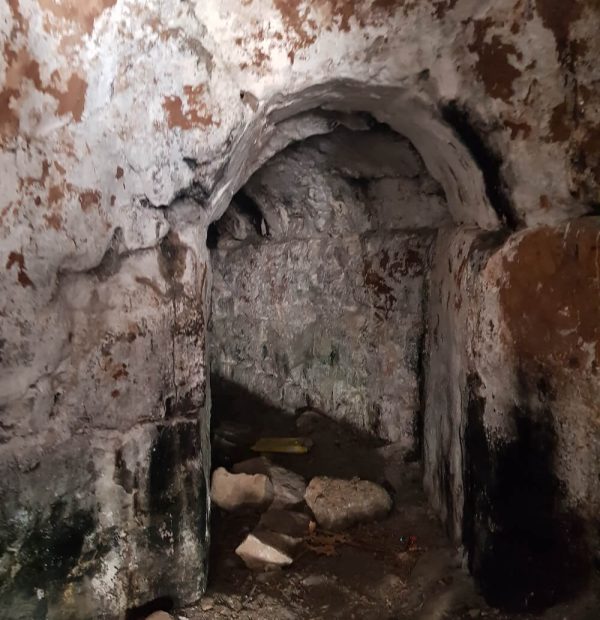
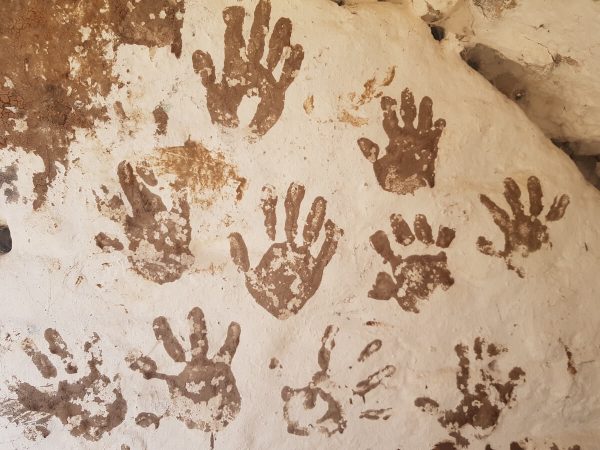
Oum Khoula
Detailed face-to-face interviews with local residents at Dougga Jadida showed 98% of the respondents were aware of the Oum Khoula marabout. 43% of all interviewees had visited it in the last 2 years, while of the total number of women interviewed, 58% had visited the sanctuary in the last 2 years, indicating that visiting the marabout is more likely for women than men.
Our interviews with local villagers revealed a number of legends relating to Oum Khoula, which are as follows. Firstly, the principal legend is that a Muslim woman was killed at Dougga during her flight from Algeria and she was transformed into a bird to live in the specus of the Roman aqueduct. Secondly, a Roman woman, named Occula, financed the construction of the aqueduct to the cisterns of Aïn El-Hammam. Each May, when the Romans cleaned the specus of the aqueduct, sacrifices were made in honour of the woman who financed the aqueduct. Thirdly, at some early time before the Arab-Muslim period, the fiancé of a woman called Bint El-Bey, the “daughter of the king”, built the aqueduct. Fourthly, the Romans promised that when they built the aqueduct, they would sacrifice a cow. When the construction was finished, they kept their promise and every year thereafter, a cow is sacrificed.
There are a number of beliefs and practices surrounding the principal legend of Oum Khoula. For example, she was a woman with long hair and rare beauty who could be seen at night walking in the ruins. As a saint known for her miracles, she is visited by villagers for various situations, such as the sick wishing to recover, women seeking to have children, mothers on the circumcision of a son, and couples proposing to marry. The marabout has no guardian at the present, but in the past this role was generally fulfilled by a woman. There is an annual festival (Zerda) held at the remains of the Temple of Caelestis to celebrate spring in honour of the saint, involving a procession of musicians, the sacrifice of cattle or other animals, and a feast. However, since the Arab Spring revolution in Tunisia in 2011 and the rise of Salafism, the popularity of the festival has waned.
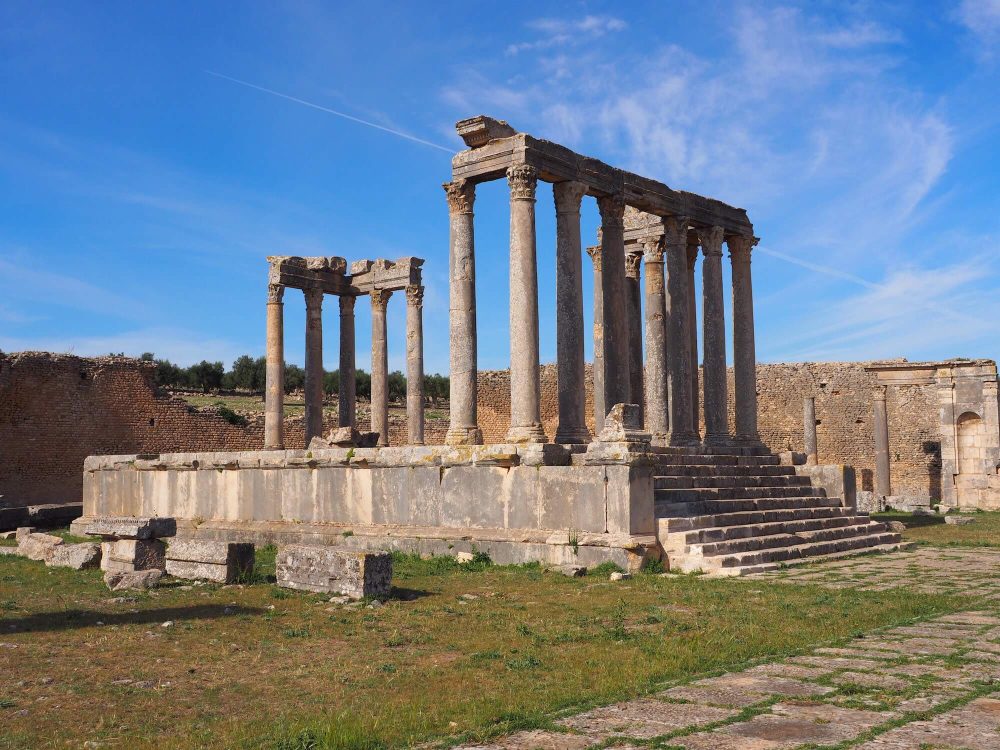
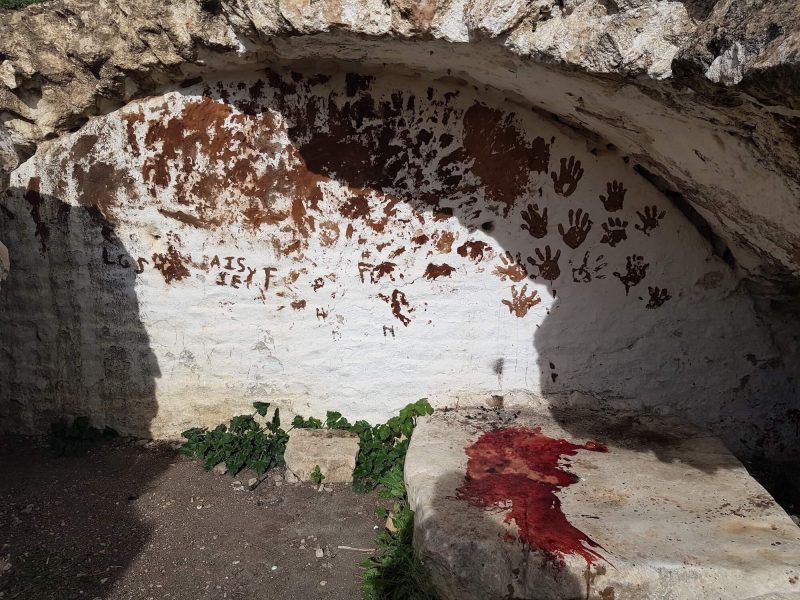
Of the various legends in relation to Oum Khoula, there are three broadly common features. Firstly, three of the four legends relate to water, specifically to the aqueduct supplying water to the Aïn El-Hamman cisterns. Secondly, three of the four legends relate to a woman. Thirdly, three of the legends related to events before the Arab-Muslim period with two of these specifically referring to the Roman period.
Cultural Memory
The legends and information about Oum Khoula form part of the cultural memory of the residents of Dougga Jadida. Cultural memory is a system of collective remembrances of the past that is transmitted from one generation to the next through texts, oral traditions, monuments, rites, and other symbols, which constitute cultural markers that evidence the existence of cultural memory.
The legends associated with Oum Khoula point to a very clear Roman connection in the specific local cultural memory. The associative similarities in the legends with aspects of the ancient past, such as the Temple of Caelestis and the cult of Astarte, with doves, the sacrifice of a cow, and the importance of supplying water to Dougga, show the persistence of cultural markers from the Roman and pre-Roman past in the cultural memory of local residents. They also raise the possibility that the cult embeds cultural markers pointing not only to Roman-era cults and celebrations for Caelestis, but also to the pre-Roman cult of Astarte and other Punic and Berber deities, taking the cultural markers back to the Numidian period.
Of course, cultural memory may not reflect historical reality and similarity does not mean causation and continuity. But the issue of importance is the persistence of markers or references within the cultural memory to elements related to the Numidian, Punic, and Roman periods in the Maghreb. The reason for the persistence of a cultural memory is likely to be a function of the community’s sense of place and significant references to that place derive from the archaeological remains and its symbols found at Dougga.
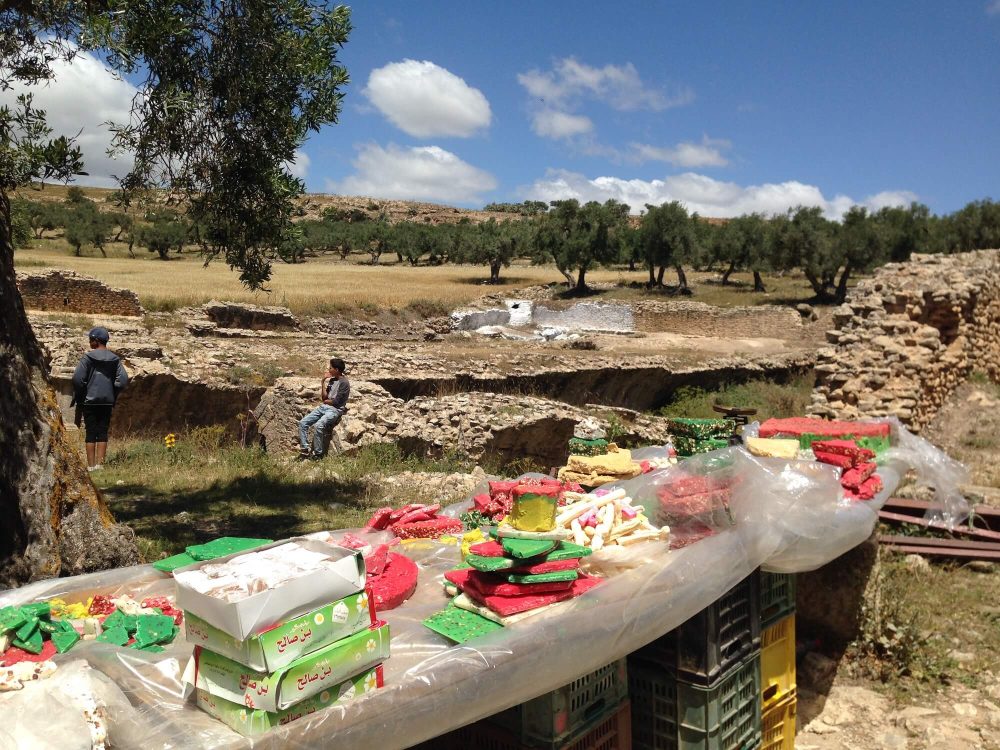
This cultural memory regarding the legend of Oum Khoula amongst the community at Dougga Jadida seems to be a foundation for its sense of identity, of what makes it special and different. The Oum Khoula marabout located in the cisterns of the Aïn El-Hammam aqueduct acts as a foundation for the factors which gave rise to the legend (namely the construction of the aqueduct and the importance of water) and its historical period (the Roman era) as well as a reminder of the legend. Over the course of time, there appears to be an unspoken dialogue between the residents of Dougga and the archaeological site which led to the formation of the cultural memory.
Cultural Memory and Management of Archaeological Sites
It is worthwhile to consider how the cultural memory of local communities should be considered in the management and interpretation of archaeological sites. The relationship between local communities and archaeological sites was not considered an important issue in the early development of cultural heritage management, as archaeological sites were generally considered to be “dead”. The process of isolating an archaeological site from present times and local communities and assigning it to some remote past, accessible only to the tools of archaeology, is a process of de-contextualisation, disassociation, and of aestheticizing archaeological sites. This process falls within a colonialist or Orientalist discourse but often continues in postcolonial settings where the new elites and bureaucracy simply replace the former colonialists.
When the bonds between an archaeological site and traditional communities are recognised, it is then transformed from a “dead” to a “living” site, and with this realisation comes the need to consider new approaches to conservation theory on how local communities are to be involved and integrated into cultural resource management policies and action in archaeological sites. Giving a voice to local inhabitants and listening carefully and respectfully to what they say, without imposing any preconceived narrative or assessment of validity, is important if archaeologists are to treat local inhabitants as partners and not merely stakeholders. Unfortunately, such approaches have not generally permeated Classical and West Asiatic archaeological practices, as they have traditionally been treated as either a political assault or unscholarly frolic.
The legends associated with Oum Khoula form a significant part of the cultural memory of the present-day community. They point to a perception of a Roman connection as well as connections to pre-Roman Punic and Numidian cults of Astarte and others. To respect and understand these connections, a process of formally documenting the relationship of local communities to the site of Dougga (including the process of relocation, oral traditions, and history of the site up to the present day) should be undertaken and this data recognised as valid and important components of the history of the site. Such actions would provide an important step in recognizing past connections and forging a new unity between Dougga Jadida, Old Dougga, and its former owners.
John Whitehouse is an archaeologist and independent researcher based in Sydney, Australia. Sami Harize is a heritage specialist based in Sidi Bou Said, Tunisia. Their essay, “Local Communities and Archaeological Sites in Tunisia: A Case Study at Dougga (Ancient Thugga) about Cultural Memory and Cultural Markers in the Longue Durée” recently appeared in the Journal of African Archaeology.
Further Reading
Assman, J. 2011. Cultural Memory and Early Civilization. Writing, Remembrance ad Political Imagination. Cambridge University Press, Cambridge.
Beschaouch, Azedine. 2000. “Épigraphie et ethnologie. D’une fête populaire de Dougga”, in Comptes Rendus des séances de l’Académie des Inscriptions et Belles-Lettres, 144, 1173 – 82.
Dermenghem Émile. 1954. Le Culte des Saints dans l’Islam maghrébin, 2nd edition, Gallimard, Paris.
Gutron, Clémentine. 2010. L’archéologie en Tunisie (XIXe – XXe siècles). Jeux généalogiques sur l’Antiquité, Karthala and IRMC, Paris and Tunis.
McNiven, I. J., and Russell, L. 2005. Appropriated Pasts. Indigenous Peoples and the Colonial Culture of Archaeology. Altamira Press, Lanham.
Whitehouse, John, and Harize, Sami. 2023. “Local Communities and Archaeological Sites in Tunisia. A Case Study at Dougga (Ancient Thugga) about Cultural Memory and Cultural Markers in the Longue Durée”, in Journal of African Archaeology, 21, 63 – 80.
Want To Learn More?
 Documenting Pluralistic Cultural Heritage in Djerba, Tunisia
Documenting Pluralistic Cultural Heritage in Djerba, Tunisia
Safouane Tlili, Senior Technician for Carthagina and ASOR implementing partner in Tunisia, finds connections to pluralistic societies in Djerba through documenting Ibadi multi-use architecture, urban planning, and defense strategies. Tlili and other ASOR implementing partners collected photographs of religious landmarks (Ibadi, Jewish, Christian, and Amazigh), to create a photographic exhibition. This exhibition coincided with an annual Jewish pilgrimage to Djerba to celebrate the Lag B’Omer Festival. Read more.
Click here for the Arabic version (التوثيق الرقمي للتراث الثقافي بالمغرب)
 The Past Performative: Thinking through the Azraq Community Archaeology Project
The Past Performative: Thinking through the Azraq Community Archaeology Project
By Alison Damick and Ahmad Lash
The Azraq Basin in eastern Jordan is a 13,000 km2 limestone basin between the arid steppes to the west and the volcanic “Black” Deserts to the east and south. With one of the largest and most reliable fresh water sources in the area, the oasis has been an important stopping point for animals and humans throughout history. The first recorded human occupation in the Azraq Basin dates to more than 300,000 years ago. The basin area hosts many documented archaeological sites, including prehistoric, Roman, Byzantine, and Islamic era material.Read More
Pop Up Museums Provide Hope for Libya in the Aftermath of War
By Will Raynolds
In the devastating aftermath of the Libyan Civil War, the past is providing a way forward. Libyan Scouts, directed by the Department of Antiquities and funded by ASOR and the U.S. State Department, are providing new hope through pop-up events that highlight Libya’s rich antiquities and heritage, as a means to bring the fractured country back together. Read More.
